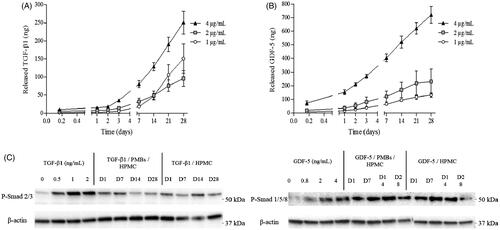Figures & data
Figure 1. Pullulan microbeads optimization process and microscopy. PMBs observed with fluorescence microscopy. (A) PMBs were formulated according to a water-in-oil emulsion/crosslinking process with varying stirring speed, amount of pullulan solution dispersed in the oil phase and cross-linking temperature. Optimal conditions are highlighted in red; PMBs were then observed using (B) confocal microscopy and (C) Scanning Electronic Microscopy; Scale bar = 100 μm.
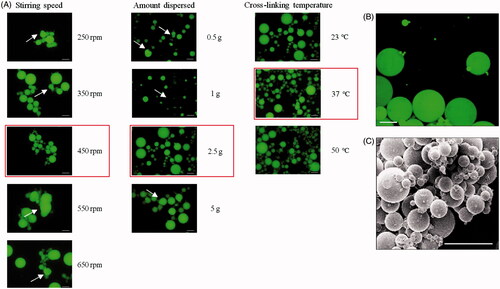
Figure 2. PMBs mechanical characterization. A hydrated single PMB was compressed between two plates using a MicroSquisher® (CellScale). Force and displacement were recorded and a representative curve is presented.
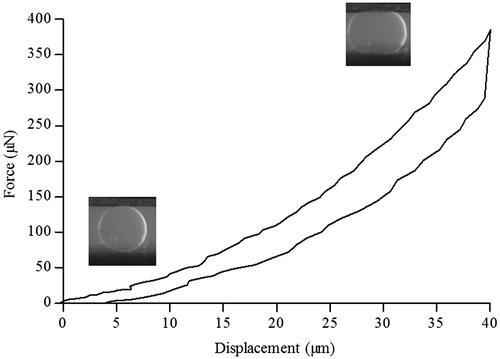
Figure 3. PMBs dispersion within Si-HPMC hydrogel precursor. PMBs were dispersed within the Si-HPMC hydrogel precursor and the influence on (A) its gel point and (B) its injectability were studied. These experiments were performed onto Si-HPMC alone or with PMBs at several concentrations ranging from 0.3 to 1.6% (w/w); (C) The PMBs dispersion in the Si-HPMC pre-hydrogel was also studied with the following steps: (1) Mix of basic viscous solution of Si-HPMC with acidic buffer, (2) Incorporation of PMBs in the pre-hydrogel immediately or after 30 min delay at room temperature. (3) PMB/Si-HPMC hydrogel was transferred into a 12-well plate. (4) After 10 days cross-linking at 37 °C top and bottom of hydrogel slices were observed; Scale bar =250 μm.
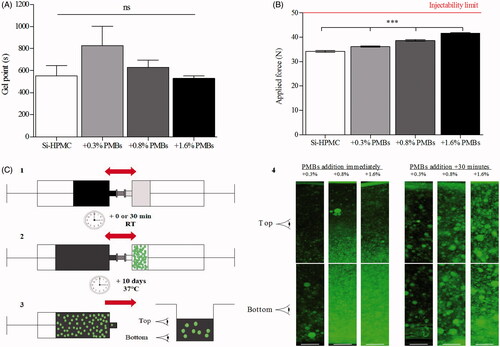
Figure 4. PMBs/Si-HPMC biphasic system mechanical characterization. Biphasic system was characterized after 10 days cross-linking at 37 °C, under (A-B) shear stress and (C) compression stress. Characterization was performed on control Si-HPMC or with adding concentration of PMBs ranging from 0.3% to 1.6% (w/w).
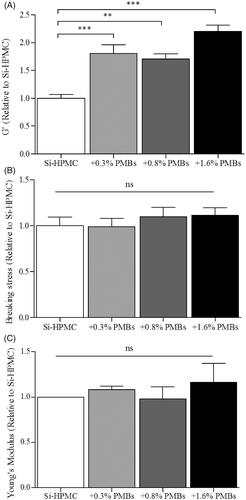
Figure 5. TGF-β1 and GDF-5 release kinetics from PMBs in PBS/BSA 1%. PMBs were loaded either with TGF-β1 or GDF-5 at 3 concentrations (1, 2 or 4 μg/mL). Release was performed in PBS/BSA 1% at 37 °C. At specific time point, supernatants were retrieved and analyzed with ELISA. Results are expressed as the cumulative amount of (A) released TGF-β1 and (B) released GDF-5 as a function of time.
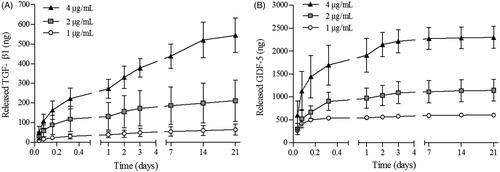
Figure 6. TGF-β1 and GDF-5 release kinetics from PMBs/Si-HPMC biphasic system and biological activity. PMBs were loaded either with TGF-β1 or GDF-5 at 3 concentrations (1, 2 or 4 μg/mL). PMBs were associated with Si-HPMC hydrogel precursor and after 3 h of crosslinking at 37 °C, release was performed by adding PBS/BSA 1% on the top of hydrogels. At specific time points supernatants were retrieved and analyzed with ELISA. Results are expressed as the cumulative amount of (A) released TGF-β1 and (B) released GDF-5 as a function of time. (C) Supernatants were further deposited onto hASC during 1 h for exploring the released TGF-β1 and GDF-5 bioactivity maintenance by western blot.
